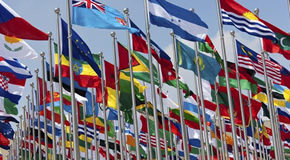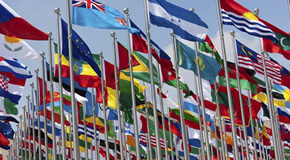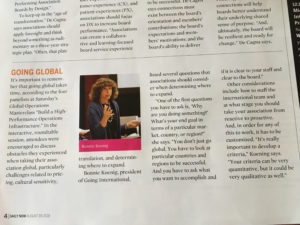Going Global Takes Time – that was the theme of an American Society of Association Executives MasterClass on operating globally that I presented at last week. 80% of the group represented organizations operating internationally for more than five years, and 24% for more than 20 years, so there was a lot of experience in the room. The group discussed some of their successes and challenges in increasing their international engagement. The unifying theme was the need to look at long-term horizons and not rush the process. Some of the specific topics discussed included:
Cultural sensitivity – For organizations, there should be an internal focus and an external focus to improving cultural sensitivity. The internal focus may include staff guidelines (what to consider), on-going discussions, or informal lunches with international visitors or to talk about global issues. Cultural sensitivity needs to be an on-going practice so it can be internalized and lead us to appropriate reactions. Some sample questions to think about: Do you know how to spot a cultural difference that you may want to be sensitive to? e.g. When seniority may count more than other factors? That the seasons are the opposite in the northern and southern hemisphere? That just because someone speaks English may not mean that they are as comfortable using it as a native speaker will be? A number of examples were shared of mistakes made. It was agreed that acknowledging that it is okay to make mistakes, share them with others, and learn from them, was important to do throughout the organization. This learning culture should become part of the organization’s DNA.
The external focus includes working with members, partners and others outside of the organization that board and staff come in contact with as representatives of the organization. It is important to question your assumptions and try to go below the surface to understand why someone may be responding in the way that they are. I shared the concept of ‘cultural interpreters’ (equally as important -and sometimes more so – than language interpreters) who know your culture as well as the one you are engaging with, who can help you interpret situations you may not understand.
(More on Cultural sensitivity)
Due diligence – If your organization is expanding its international reach, using due diligence to explore and understand new environments is crucial. First steps to take include clearly articulating with your board and senior leadership why you want to engage with a particular country or region and what you are trying to accomplish. Once the answer to these questions are clear, developing a criteria for identifying or determining if a particular area of the world is aligned with your goals is an important next step. We also discussed the different types of due diligence you might then do depending on your goals, resources and other contextual issues. These ranged from basic research using secondary sources; to using a core group of members or partners you may already have in a country/region who can serve as your guides and champions; to a ‘deeper dive’ if a larger commitment is going to be made. The deeper dive may include allocating a longer period of time and appropriate resources to understanding the cultural and other nuances of your target geographic areas.
Pricing – Where membership or the selling of products or services is involved, the question of standard or discounted pricing usually comes into play. Some organizations represented use standard prices across the world, others use the World Bank Development Indicators of country classifications, and others use modified versions of this.
One participant described varied pricing as the difference between equality (everyone gets the same thing) vs equity (everyone gets something of equal value to them). This was an example of another unifying theme – that it is okay to modify and customize for the local situation, but that one needs to be transparent as to how those decisions are being made. Especially when it comes to varied pricing, without a strong and well thought out rationale, community members may not feel like they are being treated fairly.
Time and commitment – The experience of the presenters and participants in these areas and others that came up (eg membership benefits, translations, board composition, and different types of local presence) all led to a unifying theme: those who have been most successful with their international engagement understand that it is, and plan for it to be, a long term process.
More on time and commitment:
New trends and time honored patterns
Building an International Framework – What does it take?
Effective International Expansion and Scale-up
More on international engagement:
International Engagement for Impact in a Changing World [e-book]


